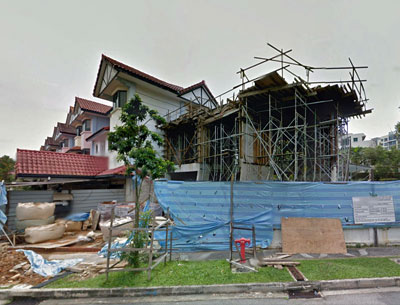http://propertysoul.com/2015/01/30/p...in-old-houses/
The secret of profiting from old houses
January 30, 2015
The following is an abstract from my book No B.S. Guide to Property Investment, currently in its third print after it was first published nine months ago.
How a property plastic surgeon makes his fortune
My neighbor Sam runs his own family business that specializes in additions and alterations work for old houses.
Apart from his business, Sam also has a flair for property investment. Once he shared with me his secret of making money from properties.
“Everyone knows that I am a contractor. But few know that I am also a plastic surgeon.”
He continued, “And I am really good at what I do. Just look at how I’ve helped my patients to hold back the years and restore their charm and beauty … except my patients are not people but properties.” He said with a chuckle on his face.
In his spare time, Sam likes to drive around the neighborhood, looking for old and run-down properties for sale. If he identifies any old house with good potential, he will negotiate hard to buy at a bargain price.
Then he starts his ‘beauty’ project to repair, refurbish and renovate the house, before selling it for a profit.
Why few are interested in buy and fix
This ‘buy, fix and flip’ real estate investment strategy may be popular in western countries. But Sam agrees that this is not the cup of tea for property investors in Asia.
“Most people don’t have the time, budget and expertise to do it. People who are financially well-off don’t want to get their hands dirty. Why would they spend time to learn to do these unpleasant tasks if they could get a contractor, painter, plumber or electrician to do it for a small fee?”
The buy and fix game is not for everyone. For one thing, the capital outlay can be quite substantial. There is so much cost involved. Apart from the usual downpayment and transaction costs in buying houses, there are many expenses in fixing and holding the property.
Despite the heavy investment cost, ‘buy, fix and flip’ is still very profitable. One can easily do some cosmetic finishes to an old apartment and flip it in the market. However, the profit margin cannot be compared with fixing and flipping a house.
The profit can be more attractive if the players of the game pool together a few partners to work on a bigger project, for examples:
1. The site area can be maximized to re-build the original one into a much bigger house; or
2. The original house can be torn down to build a few smaller houses at the same site.
The hidden profit in old leasehold houses
During my search for landed residential properties in Singapore between 2006 and 2007, I came across a few stretches of beautiful houses.
They were actually leasehold properties with only twenty to forty years left in their lease. With a central location and good neighborhood, they were only selling between $200,000 and $400,000 — an asking price even lower than a government flat in the same area.
Why was there still a market for such old houses?
The matter aroused my interest so I decided to do some primary research. I ended up spending a few weekends there doing mystery shopping by posing either as a potential buyer or a tenant.
I soon discovered that these houses attracted buyers looking for value-for-money landed living. In fact, many were bought by retirees who did not mind the short lease left and had no intention to pass the property to the next generation.
An old man who came for house viewing confessed, “Honestly, I don’t know how much time I’ve left. In fact, I might not live to see the end of the lease. But isn’t it great that I can now spend the rest of my life building the garden of my dream?”
He was prepared to pay everything in cash using his handsome pension.
A property agent told me that some ‘niche’ property investors like to buy these old semi-detached houses or bungalows, especially those near to international schools.
They make good use of the fact that there is not much buyer interest. They buy these properties at knockdown price, thus managing to minimize the initial cost and maximize the future return.
They bought them for a few hundred thousand dollars, then spent another $100,000 to $200,000 per storey for some serious renovation or additions and alterations work. The renovated houses were rented to expatriates, fetching an attractive rental of between a few thousand to tens of thousands per month.
I did a rough calculation: Assuming that the total investment is $750,000 ($350,000 for the house, another $350,000 for renovation, and $50,000 for transaction cost and furnishing) and the rental is $8,000 per month, the investor only needs eight years to break-even for his investment. And assuming it is a house with twenty years left on its lease, it can still help to generate a revenue of $96,000 every year for the rest of the twelve years!
To find out more about ‘buy and fix’, join us at the Buy, Fix and Profit from Old Houses/Apartments strategy sharing session on February 8. Learn how to identify opportunities in URA Master Plan and how to spot hidden gems in rundown houses. Expect to get insider knowledge and tips and tricks of budgeting and project management. And save your questions for the industry experts speaking there!






 Reply With Quote
Reply With Quote
